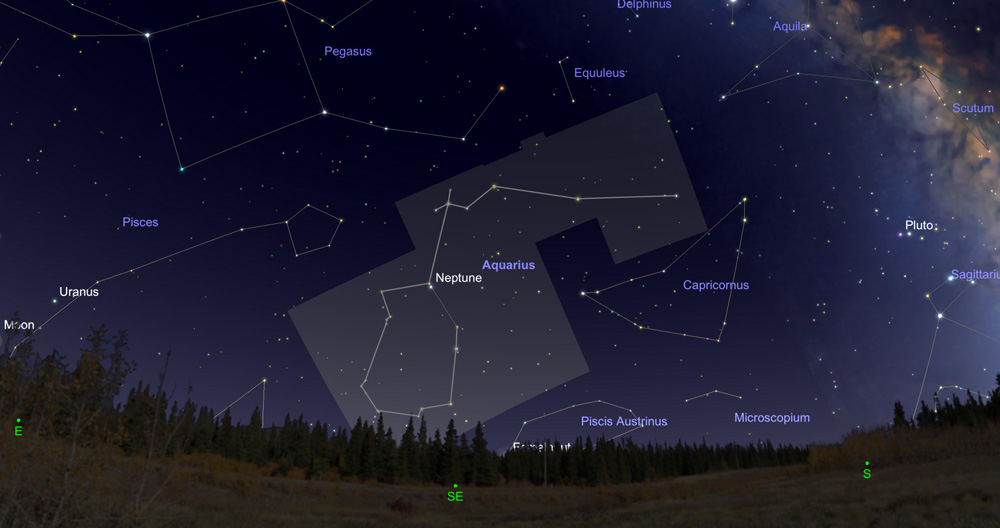| Eta Aquariids Meteor Shower May 6, 2018 ⬅︎ |
 |
Most people love meteor showers -- the streaks of light come and go so quickly. One never knows when or where the next one will appear. Meteors, also known as shooting stars, are just tiny pieces of rock and dust left behind by passing comets. When they collide with earth's atmosphere, their great speeds cause the flashes of light that we see as they burn up.
The Aquariid meteor shower produces the strongest rates of any major shower seen from the southern hemisphere -- about 60 per hour. But from the northern hemisphere and Starry Hill in particular, only about 25% of the meteors will be visible above the horizon -- the rest will be too low.
This shower actually ranges from April 19th through about May 29th but peaks on the 6th/7th. However, there is not a strong peak as there is with most showers. Instead, any night from about May 2nd through May 12th should be good for spotting this shower.
Which comet left behind the debris that forms this shower? The most famous of all -- Halley's Comet. The debris came from a time hundreds of years ago when this comet took a different path that brought it closer to earth's orbit around the sun.
The radiant of this shower -- the point in which the shooting stars appear to emanate -- is in the constellation Aquarius. Unfortunately, this constellation doesn't rise above the horizon until about 3AM during the peak. Most of us, of course, will be fast asleep. But if your schedule causes you to be up before sunrise, we encourage you to look to the southeast for a few moments.... perhaps you'll get lucky and witness an ancient piece of Halley's Comet glowing brightly as it collides with our sky -- a special event indeed!
|
|
| Level: Easy | Rating:  |  |
|



